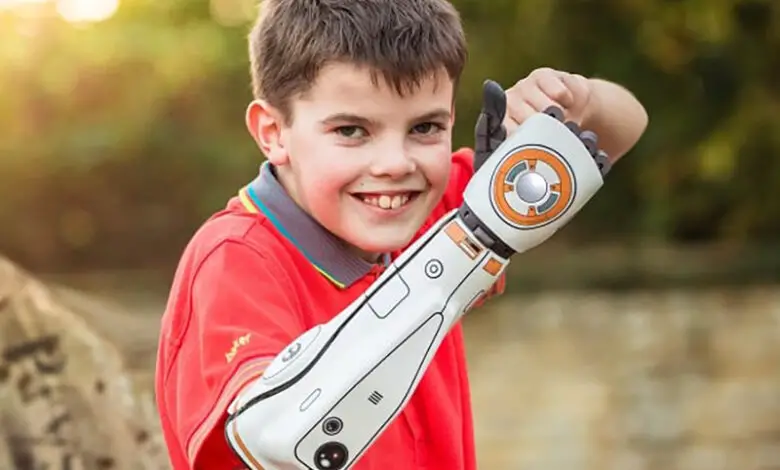
A complete guide to bionic arms and hands
We’ve partnered with Bionics For Everyone to bring you everything you need to know about bionic arms and hands, including detailed descriptions of all the current technologies and the latest research. Here, Bionics for Everyone shares its insight and knowledge, making it your one-stop repository for information on upper-limb bionics.
Visit our other article from Bionics for Everyone on bionic arms and hands.
What is a bionic arm?
A bionic arm is an electromechanical device that attaches to the human body and replicates the functionality of a natural arm/hand.
It always consists of a bionic hand or partial hand and, depending on the level of amputation, may also include a powered wrist, elbow, and/or shoulder.
For example, here are the three configurations available for the Luke Arm System from Mobius Bionics:
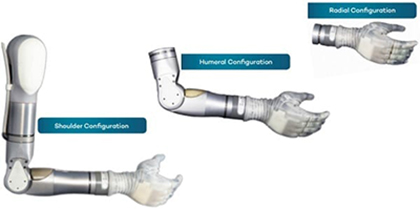
Note, this particular line of devices always includes a powered wrist but this is optional or not available for other devices. Also, in some use-cases, the hand may be replaced with a powered hook or clamp.
How bionic hands function
This section describes the limits of bionic hand dexterity beginning with the mechanical design of the fingers and working backward.
The core mechanical function of a human finger is to open and close. This is replicated in a bionic finger using a design like this:
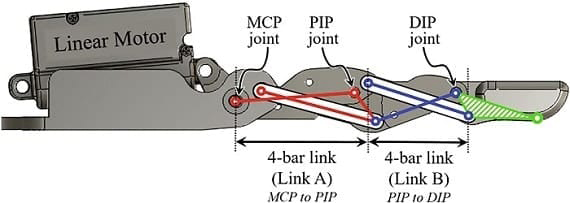
Source: https://doi.org/10.1016/j.ohx.2020.e00100
A battery-powered motor drives a gearing system to move the main MCP joint, which then moves the second and third joints via a bar linkage system. Note, there are many variations of this, such as using pulley systems to simulate tendons instead of bar linkage systems.
The key feature in this type of design is that there is only one independent joint: the MCP joint (main knuckle). The other two joints automatically follow that joint’s lead, producing the following fixed pattern of motion:
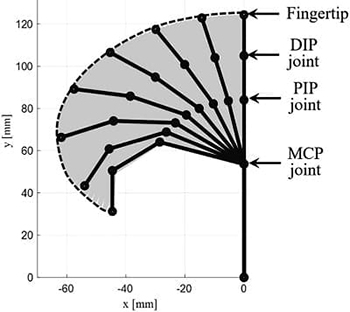
Source: https://doi.org/10.1016/j.ohx.2020.e00100
By comparison, natural fingers can move the middle or PIP joint independently and the DIP joint quasi-independently. Additionally, natural fingers can spread out and twist and turn in a myriad of combinations.
The movement of a natural thumb is even more complex. In addition to opening and closing, it can rotate down and slightly outward to touch the entire underside of any finger and even parts of the palm. This allows natural hands to grasp objects of any shape.
Here is a diagram of a bionic thumb from the early work on one of the more recent entries into the bionic hand market, the Psyonic Ability Hand.
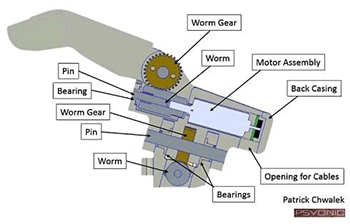
Despite its mechanical complexity, this type of thumb still has many limitations. Yes, it can position itself to become an opposing force for many grips but it lacks the dexterity of a natural thumb.
This brings us to our main point for this section: bionic hands are impressive feats of engineering but they are much simpler than natural hands. In one respect, this hardly matters because they can still perform a wide variety of tasks, as demonstrated in this video:
However, do not expect them to match the dexterity of natural hands. A better way to assess a bionic hand is its usefulness, which is determined mostly by its user control system.
User control systems
When you move a natural limb, your brain sends nerve signals to the muscles, which in turn move the limb.
When a limb is amputated, the brain still sends these signals even though some of the muscles are no longer there to react to them.
The general concept behind bionic user control systems is to intercept the brain’s signals and convert them into commands for the bionic device.
There are multiple ways to do this for bionic arms & hands. For a quick overview of control system options, see bionic hand control systems. For details on each option, click the relevant link below:
- Myoelectric Direct Control
- Myoelectric Pattern Recognition
- Myoelectric with Surgically Embedded Sensors
- Advanced Neural Interfaces
This subject should not be neglected. User satisfaction levels depend almost entirely on selecting the right control system.
Current below-the-elbow bionic arms and hands

Available models
The following is a list of the models for below-the-elbow bionic arms and hands either already on the market or soon to be (presented alphabetically). Each links to its own page for more specific details:
- Aether Biomedical Zeus Hand
- Atom Limbs Atom Touch
- BrainRobotics Hand
- COVVI Nexus Hand
- Mobius Bionics LUKE Arm
- Open Bionics Hero Arm
- Ossur i-Limb
- Ottobock bebionic Hand
- Ottobock Michangelo Prosthetic Hand
- Psyonic Ability Hand
- TASKA Prosthetics TASKA Hand
- Unlimited Tomorrow TrueLimb
- Vincent Evolution
The Zeus, Nexus, BrainRobotics, i-Limb, bebionic, Michelangelo, Ability, TASKA, and Vincent Evolution devices can all used as components in below- or above-the-elbow solutions. They can all interface with direct myoelectric control systems, while most can also be used with universal pattern recognition control systems such as Coapt’s Gen2 and IBT’s Sense.
The Atom Touch and Luke Arm devices are modular systems that can be configured for any level of amputation below or above the elbow. The Luke Arm can use a full range of control systems while the Atom Touch relies on a highly advanced, propriety control system driven by artificial intelligence.
The Hero Arm and TrueLimb are complete below-the-elbow solutions that offer proprietary, direct myoelectric control systems only.
Affordability of bionic hands and feet
Of the bionic hands currently on the market, the most affordable are the TrueLimb from Unlimited Tomorrow, the Hero Arm from Open Bionics, and the Zeus Hand from Aether Biomedical.
In their simplest configuration (least complicated residual limb), the final price for these three devices can range from £8,000 to £17,500, including prosthetist fees, where applicable.
By comparison, the most expensive hands can cost more than £60,000.
For more information, see our bionic hand price list.
Current partial hand or finger options

Nearly 2/3 of upper-limb amputations involve finger or partial hand loss. This equates to millions of people around the world who are missing fingers, parts of fingers, or a part of their palm.
Both Ossur and Vincent Systems have created excellent bionic partial-hand prostheses but these are not well-suited for heavy loads or challenging environments. They’re also quite expensive. To address these deficiencies, our list of articles on partial-hand devices includes the best non-bionic (i.e. strictly mechanical) options:
In keeping with our goal of helping you stay informed, we have also created a current partial hand prosthesis options summary page.
Current above-the-elbow bionic solutions
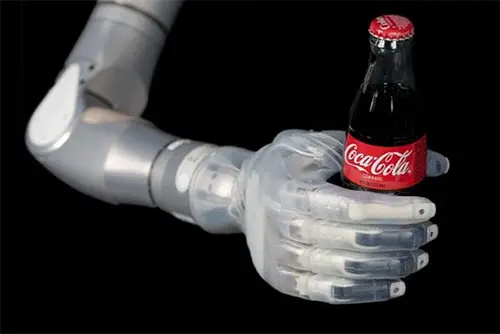
Which myoelectric pattern recognition system is right for you?
The following is a list of complete above-the-elbow bionic solutions either already on the market or soon to be (presented alphabetically). Each links to its own page for more specific details:
Note that, because of their modular nature, both of these devices can also be used for below-the-elbow solutions.
The next list consists of electric elbows, which are not just elbows. They also provide connectors and control centers for other components such as electric wrists and bionic hands or other terminal devices. Put more plainly, an electric elbow is not a complete above-the-elbow solution. However, it is your starting point to piece together such a solution if you do not wish to use one of the complete solutions listed above.
- College Park Boston Digital Arm
- Steeper Espire Elbow
- Motion Control Utah Arm
- Ottobock DynamicArm
- Ottobock ErgoArm
Note, we are lacking solid information on the net cash price of these elbows to end-users for a typical solution. If you have this information, please share it with us through our contact form.
Finally, here is a subset of the bionic hands that can be used when piecing together an above-the-elbow solution using components from different manufacturers:
- Aether Biomedical Zeus Hand
- BrainRobotics Hand
- COVVI Nexus Hand
- Ossur i-Limb
- Ottobock bebionic Hand
- Ottobock Michangelo Prosthetic Hand
- Psyonic Ability Hand
- TASKA Prosthetics TASKA Hand
- Vincent Evolution
You may be wondering about wrist components and/or shoulder components. We do not yet have a sufficient grasp of these components to lay out the options but we do plan to do so in the future.
Affordability
The big problem with above-the-elbow bionic solutions is cost. The cost for the Atom Touch is between $50,000 and $100,000 US depending on the configuration. The cost of the LUKE Arm is likely similar.
Even the electric elbows can sell for more than $50,000 US for top-of-the-line models, and that’s before you’ve added a wrist and hand or another bionic terminal device.
Unfortunately, this price tag exceeds the budget of most amputees. However, we should not be discouraged by this. It takes a while for new technologies to trickle down into the broader market. And then it takes even longer (i.e. the effect of market forces) to significantly reduce costs. We just have to do what we can to accelerate these processes.
Latest research articles for bionic arms & hands
Which myoelectric pattern recognition system is right for you?
We are entering a period of bionic arm & hand development that is both exciting and potentially confusing. This article is meant to clarify the most recent options for pattern recognition systems.
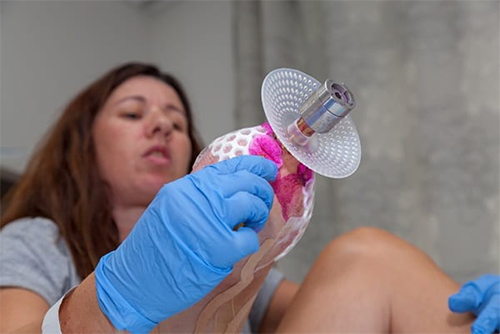
Osseointegration for limbs involves inserting a metal rod into an arm or leg bone. The bone then fuses with the rod in a manner similar to fracture healing. The resulting implant offers numerous benefits but also introduces significant health risks.
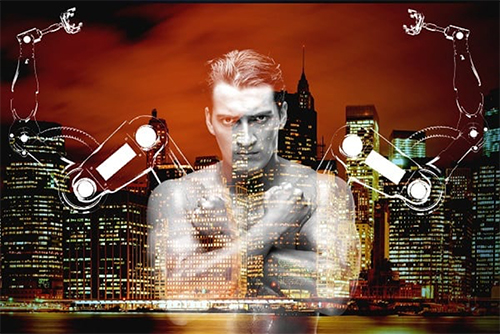
Mind-control over bionic limbs involves multiple technologies and approaches. Ultimately, though, we are headed toward a future where bionic limbs are fully integrated into our nervous system and as intuitive to use as our natural limbs.
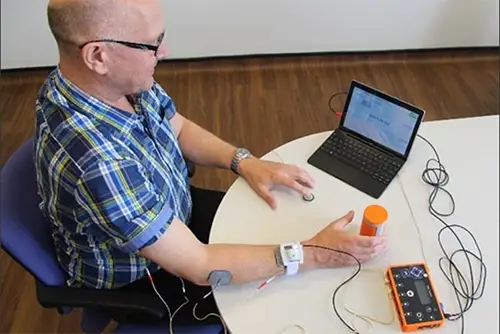
Every day, researchers around the world are working to improve the lives of those with limb differences. In today’s snapshot, we take a quick look at the work being done by the Human Movement and Rehabilitation group at the University.
Bionic feats for bionic arms and hands

Preparing food is a daily activity that is essential for personal independence. In these videos, we show you various bionic hands hard at work in the kitchen.

Bionic hand technology is improving all the time, with a lot of emphasis on better control systems, more sensory feedback, and faster response times. But these devices still tend to be relatively fragile. In these videos, we show you a few examples of more rugged use.

Tying shoelaces is a real challenge for bionic hands because it requires significant dexterity. For a hand to truly play its part in this task, it should have good hand speed and the ability to switch grips with ease.

Our love of music is universal. For some, it’s so powerful that they can’t resist the desire to make a bit of music on their own. Here are four amputees fulfilling that desire.
Real stories for bionic arms and hands

At BionicsForEveryone.com, we are very clear about where our loyalties lie when it comes to bionic limbs, and that is with end-users. We don’t have anything negative to say about bionic companies. On the contrary, we have great respect for them and their employees, most of whom are quite passionate about helping people with limb differences.
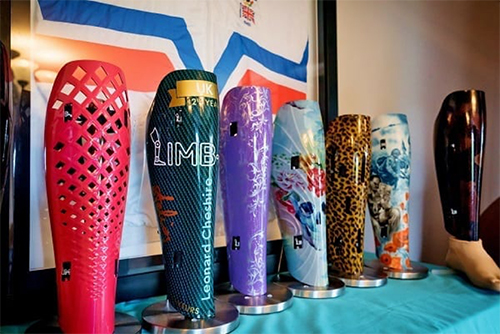
There is something transformative happening in the prosthetics industry — a long-overdue awakening among product designers, those with limb differences, and the general public that is helping us take a big step toward a more inclusive society.

The innovators featured in this post are all accomplished scientists, engineers, and/or inventors. They have all made significant contributions to the advancement of bionic limbs. But what makes them truly special is their passion to improve the lives of those with limb differences. Not only do they provide us with technical leadership. They are also inspiring us toward the permanent elimination of all forms of disability.

An amazing conversation with amputee camp counselor, Richard Slusher. We learned more about limb difference from talking with Richard than we have in nearly a year of hard studying.
Related information
Bionic arms can attach directly to the humerus (upper arm bone) or radius and ulna (forearm bones) through Osseointegration. This improves range of motion, strength, stability, and also adds a rudimentary sense of touch (through vibration). For more information, see Osseointegration for Bionic Limbs.
For a comprehensive description of all current lower-limb technologies, devices, and research, see our complete guide to bionic hands and feet.
By Bionics For Everyone
More on Disability Horizons…
